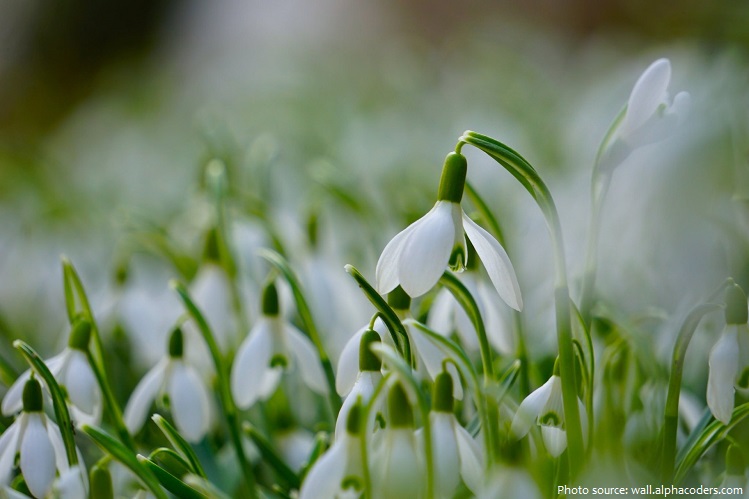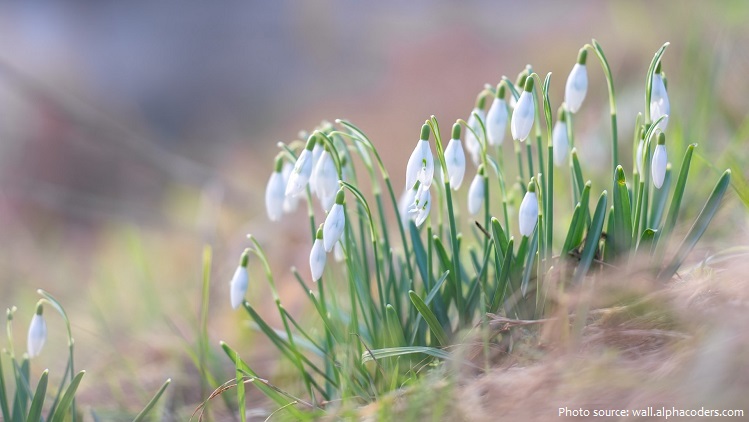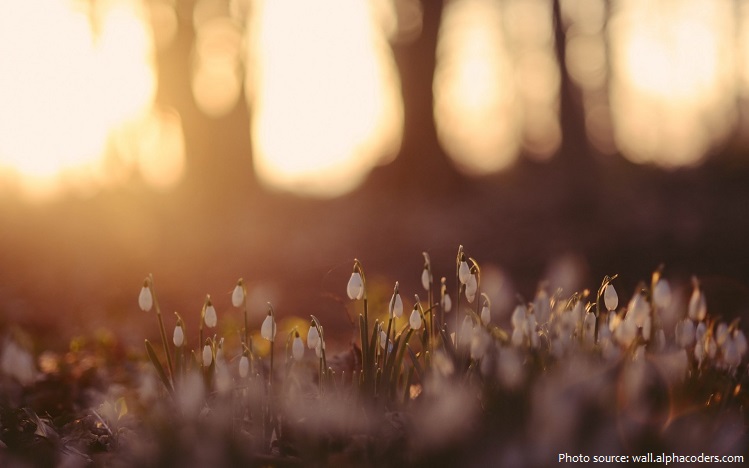Snowdrop (genus Galanthus) is a genus of flowering plant in the family Amaryllidaceae.
There are about 20 species of snowdrops.
Snowdrop is native to Europe and southwestern Asia. It has escaped gardens and naturalized in parts of eastern North America.
Snowdrops are grown in both cold winter regions and moderate winters, but keep in mind they truly dislike warm winters.
Snowdrop is perennial plant, which means that it can survive more than two years in the wild.
As the name suggests, snowdrops are one of the first of all spring flowers to bloom, although certain species flower in late autumn and winter.
Snowdrops are small herbs with bulbs and basal linear leaves. The small flowers are composed of six white tepals (undifferentiated petals and sepals); the three outer tepals are long and curved, and the inner tepals are small and notched. The fruit is a capsule and bears seeds with characteristic hook-shaped elaiosomes (fatty seed structures) that attract ants for dispersal. The plant dies back shortly after the fruits have opened.
Snowdrops don’t often multiply from seed in a garden, but they will multiply by offsets. Offsets are new bulbs that grow attached to the mother bulb. After a couple of years, the clump of bulbs can be quite dense. If you wait until the flowers fade but the leaves are still green and vigorous, you can easily increase your planting. Simply dig up the clump, separate the bulbs and immediately replant them in the new spaces that you already prepared.
Snowdrops are a pest-free plant. Rabbits and deer won’t eat them either, and most chipmunks and mice will leave them alone.
The snowdrop flower has several meanings depending on the context. The most common meanings are:
• Purity
• Hope
• Rebirth
• Consolation or Sympathy
According to legend, Eve was distraught after God cast her out of the Garden of Eden. God sent forth continuous snow and the earth was cold and barren. As Eve sat weeping, an angel appeared to comfort her. The angel caught a snowflake and breathed upon it. The snowflake fluttered to the earth and gave birth to the snowdrop.
Snowdrops have been known since early times, being described by the classical Greek author Theophrastus in the 4th century BC.
The snowdrop flower is also used in religious ceremonies. In the 15th Century, monks planted snowdrops in the monastery gardens. During the Candlemas (Feb. 2), the picture of Virgin Mary was removed and snowdrop petals were displayed instead.
Snowdrops are one of the few flowers that only come in one color – white. This is probably why the snowdrop symbolizes purity, the traditional color meaning of white flowers.
Celebrated as a sign of spring, snowdrops can form impressive carpets of white in areas where they are native or have been naturalised. These displays may attract large numbers of sightseers. There are a number of snowdrop gardens in England, Wales, Scotland and Ireland.
Galanthus is derived from the Greek γάλα (gala), meaning “milk“ and ἄνθος (anthos) meaning “flower”, alluding to the color of the flowers.
The word “snowdrop” may be derived from the German schneetropfen (snow-drop), the tear drop shaped pearl earrings popular in the sixteenth and seventeenth centuries.
The snowdrop shares its symbolism with the carnation, as they are both the birth flower for the month of January.
Snowdrops are sometimes confused with the two related genera within the tribe Galantheae, snowflakes Leucojum and Acis.





